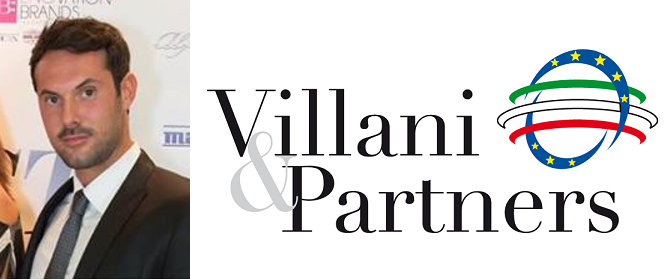One of the main concerns of aspiring entrepreneurs grappling with launching a startup is capital. Finding funds becomes a real obsession, to the point that it risks making people forget other equally important aspects, such as validating the product or service you intend to propose. It is wise to always remember that it is useless to have mountains of capital at your disposal if there is no one willing to buy what you want to sell them.
The saying "money does not make happiness" also applies to startups. Having posited this, it is also true that without money, you can't do anything. The strategy for not being obsessed with capital and at the same time having the resources available to carry out one's projects is to plan with a careful strategy for fundraising, creating a personalized and rational funding plan that draws from multiple sources. These should, in fact, vary depending on the type of startup, the stage of development it is in, and any other peculiarities.
Among these sources cannot miss subsidized finance, a vast sea of opportunities that often go untapped because we give up when faced with the complexity of certain regulations and bureaucratic procedures. But it is worth learning how to untangle these waves to discover a valuable new source of economic resources for startups.
What is subsidized finance
Let's start at the beginning. Subsidized finance refers to a range of financial and fiscal instruments developed by local, state or European government institutions to support business growth and innovation.
A healthy business fabric is one in which new businesses are born, existing businesses grow in size and productivity, research and innovation are continuous, and production systems and technologies are up-to-date and focused on sustainability. Subsidized finance is one of the institutional tools to facilitate all this.
Some opportunities are aimed at specific economic sectors, others at specific categories of companies (e.g., only startups or SMEs), and still others at specific goals to be achieved-the first hurdle is usually figuring out whether you fall within the potential beneficiaries of a facility. Because between saying and doing, there is bureaucracy with its language.
Types of subsidized finance
Subsidized finance comes in instruments with different operating logics:
- non-repayable grants, which are funds provided directly by the sponsoring institution, usually for specific projects, with no provision for either repayment of principal or payment of interest;
- tax breaks and incentives, which may manifest as tax credits, exemptions or rate reductions for businesses that carry out certain investments or activities;
- subsidized financing, that is, loans granted to businesses on more favorable terms than conventional loans. They may include subsidized interest rates, extended repayment periods, or grace periods in which repayment of principal is not required;
- public guarantees, which enable businesses to access financing more easily or obtain cheaper rates;
- Interest subsidies, which cover the interest owed by an enterprise on a loan.
All of these categories are found in both national and European grants, which often overlap. Depending on the type, the contents of the notice or regulation that contains the instructions for applying and the requirements for obtaining the benefit change. Conditions, fulfillments, and necessary documents, limitations can occupy several pages: it is good to read them all to avoid nasty surprises and relying on benefits that you will not get, or will not get to the extent expected.
Want to learn more directly with our crowdfunding experts about the topic you are reading about?
Turbo Crowd can reveal to you all the tricks of the crowdfunding trade, explain the capital-raising opportunities available to you, and provide you with practical support to carry out a successful crowdfunding campaign.
How to take advantage of subsidized finance effectively
In the magnum sea of opportunities, the risk of fishing in the pile of those that have more visibility in the media or are easier to approach is high. So is the risk of not fully understanding the content of a call for proposals.
Aiming for a facility that is not that useful for one's business, or is not useful at that time, or neglecting the conditions set by a regulation can be a huge waste of time and cause even serious economic damage.
Keeping up with all the opportunities, their respective requirements, timelines, limits, conditions, fulfillments, possible overlaps, eligible expenses and coverages really takes a lot of time and attention. That's why there needs to be a person predisposed to stay abreast of the latest news in subsidized finance and to hold the strings of the shared process of checking feasibility, preparing materials, submitting the application and waiting for feedback. A process that inevitably involves several people on a team.
Especially for young businesses with little experience in alternative finance, the time and effort required to do what is described may outweigh the expected benefits. It is useful, then, to consult periodically one of the many databases available online (usually for a fee) that are updated promptly with new alternative finance opportunities as they come out. An even more structural alternative is to rely on the advice of professionals who deal precisely with analyzing a company's needs, identifying the most suitable and feasible but above all really meaningful subsidized instruments, preparing all the documents and managing the application from submission to obtaining financing, with strategic, legal, and financial coaching. Valuable help not only in obtaining financing but also in making the best use of it.
The right mix for finding funding for a startup
Structuring an organic and timely subsidized finance plan for a startup is also key to interweaving these instruments with the other sources of funding from which a startup must draw. One alone, as we have already mentioned, is not enough: for sustained and solid growth, it is necessary to create the right mix of sources from which to raise capital.
Here, then, a subsidized finance tool can become a means of accessing financing for a project to obtain a patent, which in turn will enable it to receive other funding; or to meet the requirements of a startup accelerator to gain access to a pathway; or again with subsidized finance, one can incur consulting fees to launch a crowdfunding campaign with which to raise other funding; or conversely, a crowdfunding campaign can be the avenue to obtain the validation and metrics needed to access a subsidized finance call or to become attractive to a professional investor or investment fund.
The synergies can be endless and make it clear that the hardest part is not finding funding for a startup, but knowing how to use it effectively-a goal that requires expertise, experience, and a good overview.

L’autore: Edoardo Segù, Villani&Partners e Growth Management Consulting








































